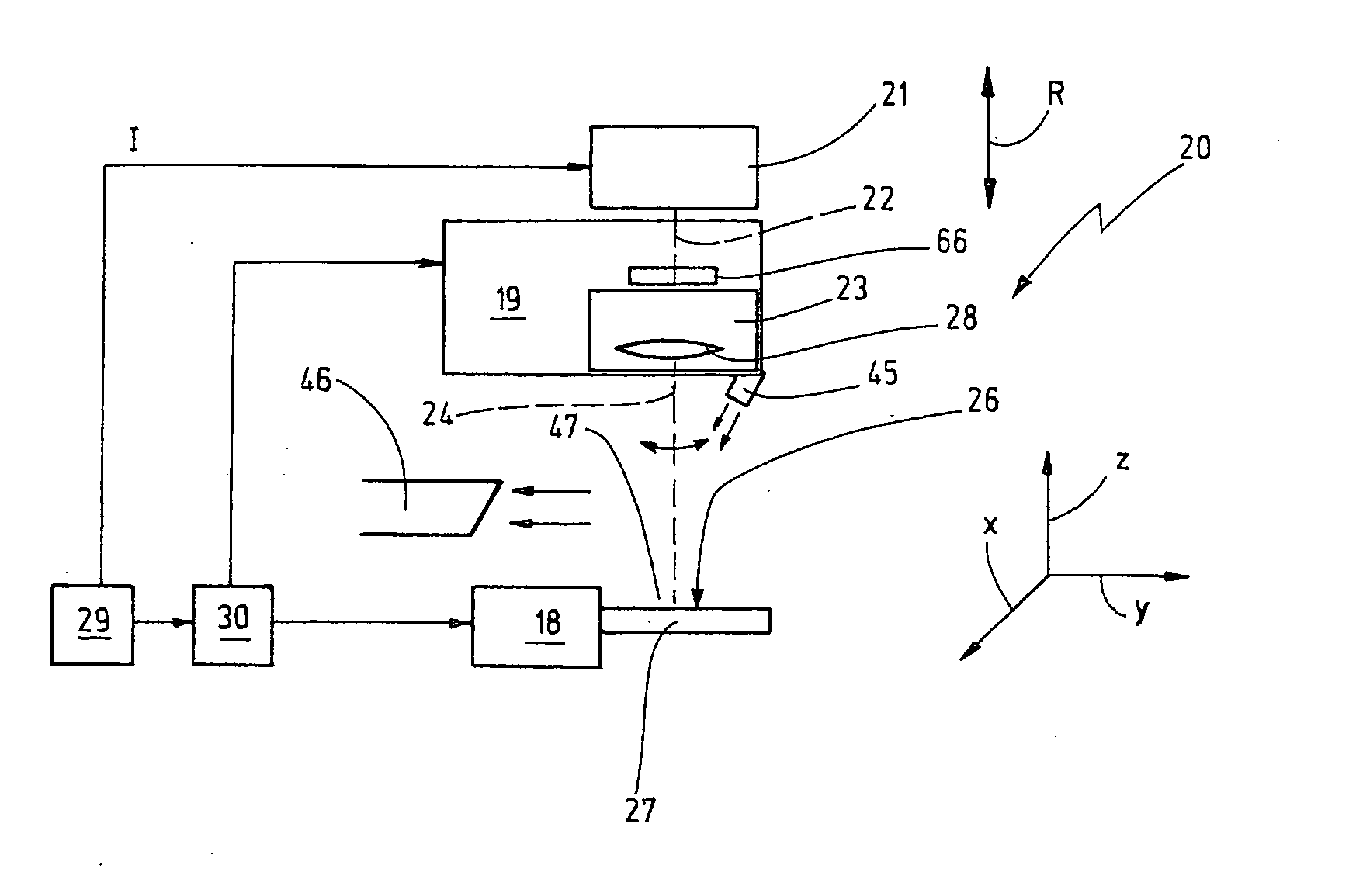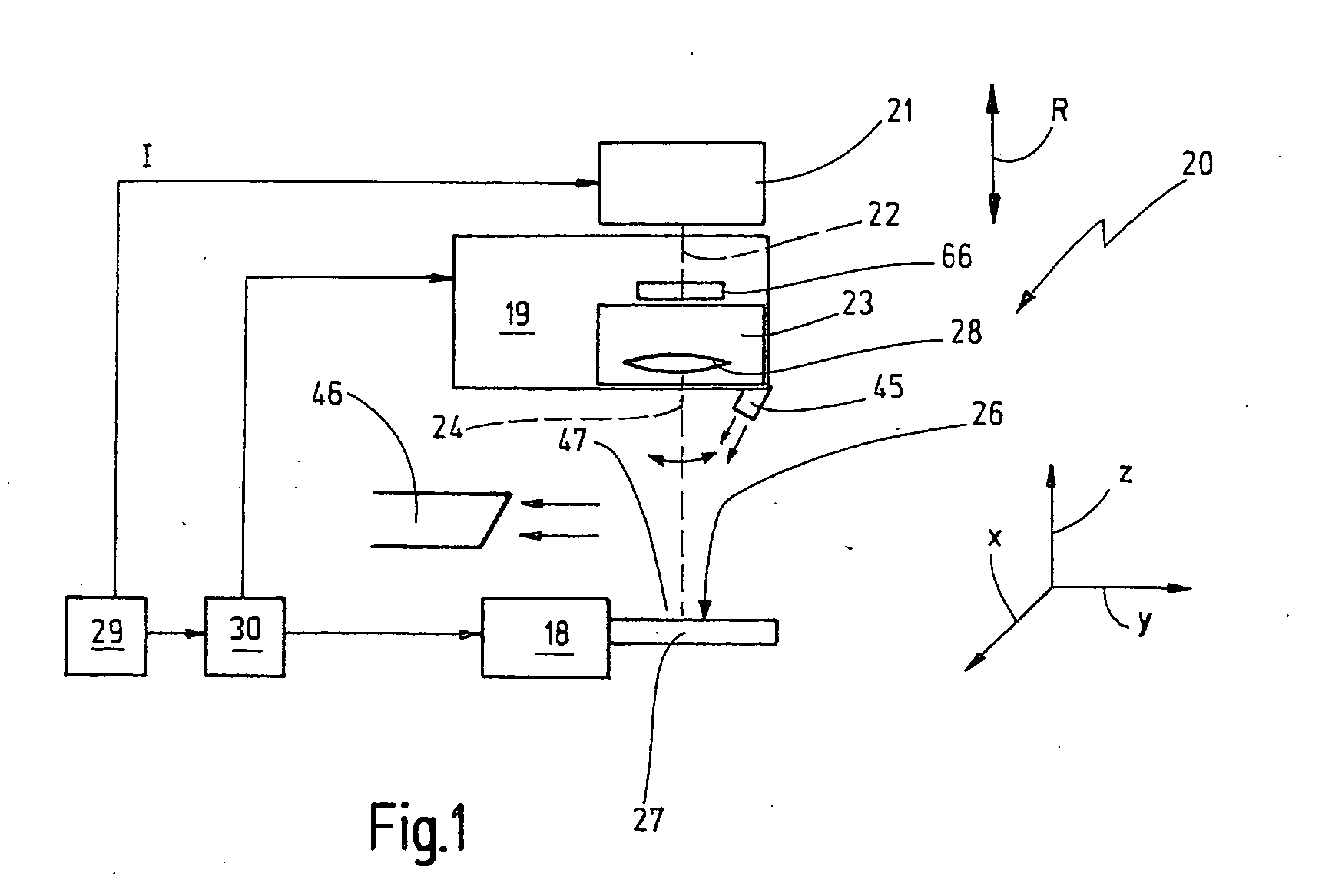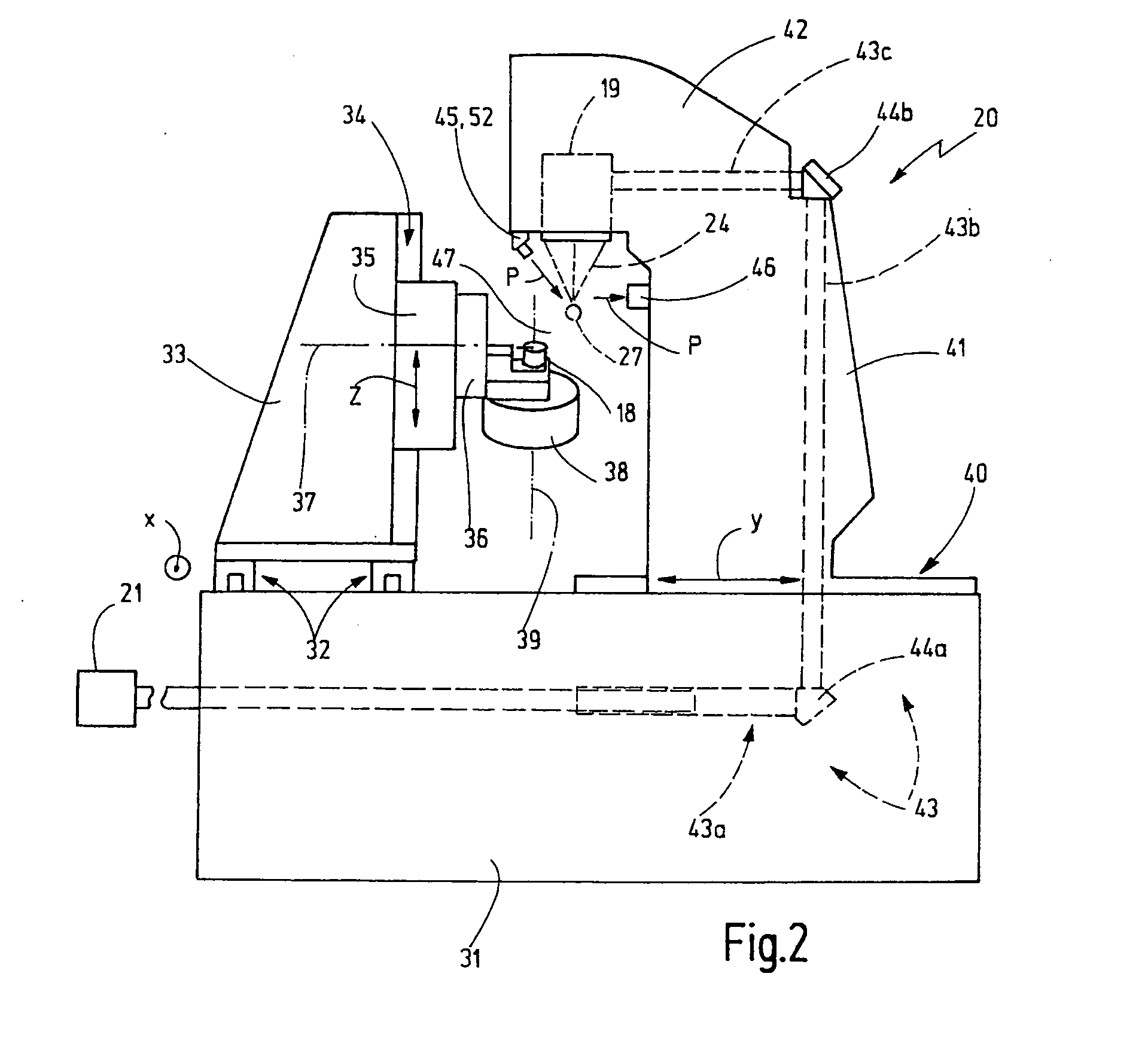Laser machining apparatus and method for the manufacture of a rotationally symmetrical tool
a technology of rotational symmetry and laser machining, which is applied in the direction of manufacturing tools, metal working apparatus, laser beam welding apparatus, etc., can solve the problems of large force effect on the blank, undesired deformation, and limited technical and economic respect of grinding of very hard materials, so as to avoid quantitative negative impacts on the contour being manufactured and increase the depth of the chip groove
- Summary
- Abstract
- Description
- Claims
- Application Information
AI Technical Summary
Benefits of technology
Problems solved by technology
Method used
Image
Examples
Embodiment Construction
[0048]FIG. 1 shows schematically a laser machining apparatus 20. The laser machining apparatus includes a pulsed laser 21 which generates a pulsed laser beam 22 and supplies it to a laser head 19 including a redirecting arrangement 23. The redirecting arrangement 23 is capable of changing the direction of the laser beam impulses provided, and as a result, directing the laser beam impulse 24 onto a predetermined impact location 25 on the surface 26 of a blank 27. The redirecting arrangement 23 may also be called a scanner arrangement. It also comprises a focusing lens system 28. The blank 27 is supported on a tool support 18 in an accommodation area 47.
[0049]The laser machining arrangement 20 further includes a control unit 29 which controls a positioning arrangement 30 via which a relative position between the laser head 19 and the blank 27 can be adjusted and changed. The number of linear axes and rotational axes of the positioning arrangement 30 may vary.
[0050]An exemplary embodim...
PUM
| Property | Measurement | Unit |
|---|---|---|
| diameter | aaaaa | aaaaa |
| diameter | aaaaa | aaaaa |
| diameter | aaaaa | aaaaa |
Abstract
Description
Claims
Application Information
 Login to View More
Login to View More - R&D
- Intellectual Property
- Life Sciences
- Materials
- Tech Scout
- Unparalleled Data Quality
- Higher Quality Content
- 60% Fewer Hallucinations
Browse by: Latest US Patents, China's latest patents, Technical Efficacy Thesaurus, Application Domain, Technology Topic, Popular Technical Reports.
© 2025 PatSnap. All rights reserved.Legal|Privacy policy|Modern Slavery Act Transparency Statement|Sitemap|About US| Contact US: help@patsnap.com



